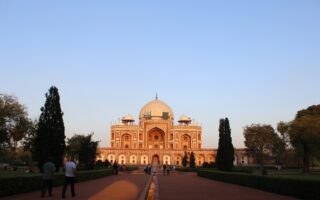Today, it is impossible to imagine a world without airplanes. Neither for the economy, nor for tourism. The youngest among us often dream about being able to fly. Sometimes, when they become a pilot, that dream comes true.
In this post, we focus on the Father of Aviation, Abbas ibn Firnas.
Abbas ibn Firnas
Abbas ibn Firnas was born in 810 CE in Ronda, a town near Cordoba and therefore belonged to Andalusia, Spain. He lived his whole life in Muslim Spain that was known for its scientific development. Its universities ranked the highest in the world, just under Baghdad’s “House of Wisdom”. Ibn Firnas died in 887 after an aircraft accident.
The Flying Machine of ibn Firnas
Ibn Firnas devoted his whole life to science. He wrote several books on mathematics, astronomy and physics. He was a respected engineer who, like the ancient Greeks and Egyptians, craved to be the first man to build a machine that would allow him to fly.
Contrary to his predecessors, he did actually succeed. He had written a book in which he described his aircraft. However, all of his books were destroyed by fire, this time when the Mores were expelled from Spain. The only information about him and his aircraft that is still available today, is what chroniclers were able to recover.
That explains again why Leonardo Da Vinci’s aircraft from the 15th century is generally acknowledged as the first aircraft. Apart from the fact that Da Vinci’s aircraft forms the only actual basis for today’s modern aircrafts (airplanes, helicopters and so on), one has to account for the intellectual honesty by acknowledging that Abbas ibn Firnas had already succeeded to fly with his aircraft back in the 9th century.
The First Flight
Abbas ibn Firnas was usually able to land without problems, but he occasionally had to deal with a crash (especially whilst landing). Two crashes have become infamous: his two biggest in the city of Cordoba.
The first flight took place in the year 852. Ibn Firnas wrapped himself in a coat that was “reinforced” with wooden pieces. He saw the coat as his “wings”, as if he were holding some kind of glider. He climbed onto the minaret of Cordoba’s largest masjid and jumped off. He failed in his attempt, but ibn Firnas was lucky enough to be flying low, allowing him to walk away afterwards with no severe wounds.
The Second Flight
Ibn Firnas was someone who learned from experience. Therefore, he immediately started reconstructing his aircraft after the crash. He made one out of silk and eagle feathers.
After that, he did a second attempt on the Jabal al-Arus mountain. A large crowd had gathered, because they didn’t want to miss his flying attempt, but many of them were equally frightened as they hadn’t forgotten what happened on his first attempt.
Ibn Firnas gave a speech before he jumped off the mountain with the wings in his hands:
This moment, I shall say good bye to you all. I shall do so by moving my wings up and down, which should normally result in me flying like a bird. If everything goes well, I shall be able to fly back to you safely.
He jumped and was able to fly up to ten minutes. However, when he was trying to land, he crashed and broke his back. He wouldn’t be able to fly for some time, but he was still happy about his attempt. Through his second attempt he discovered the importance of the tail. He understood that birds landed on the root of their tail. He was not able to incorporate that in his flying attempts, because he simply didn’t have a tail.
The Fatal Flight
On his consequent attempts he would be successful, apart from his final flight which would turn out to be fatal. This time, it didn’t happen while landing but it was caused by damage to his aircraft.
His books on his home-made aircraft have undoubtedly been a great source of inspiration for later scientist like Leonardo Da Vinci. This can be seen from the fact that Da Vinci knew that the tail was a necessary part for a safe landing.
Nevertheless, ibn Firnas remains unknown to most people. The lack of fame of the writings of the chroniclers of that time is most likely the biggest cause for such obscurity. It’s about time we blew new life into his heritage.



